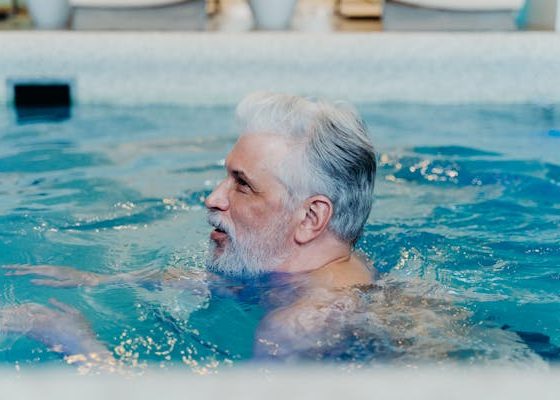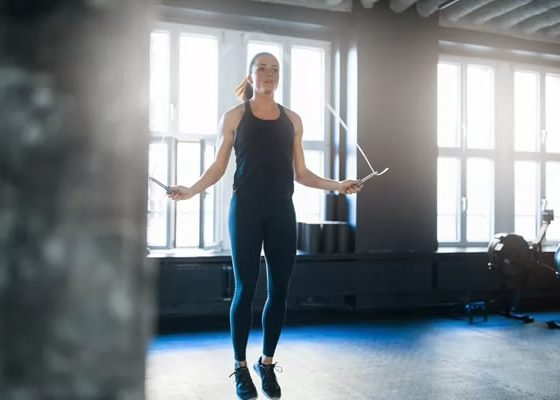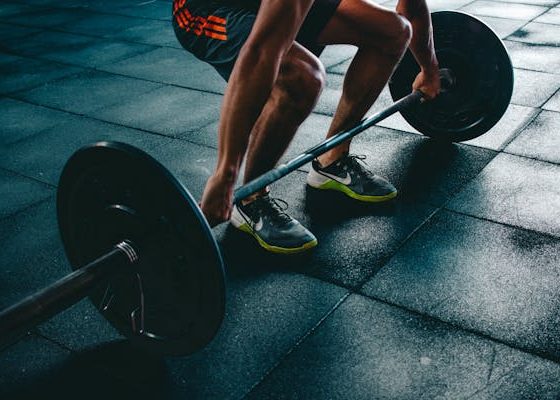Due to the fundamental realities of age, seniors need to approach almost everything in life differently than they would have when they were younger. Building muscle is no different, and there are a lot of things that the average senior can do to get stronger and healthier. Learn about the best muscle-building supplements and muscle-building exercises with this senior muscle-building tips. But, be sure to consult your physician before beginning any kind of new exercise routine or changing your diet.
What exactly is muscle mass?
To effectively manage your muscle mass and body fat percentage, it’s crucial to grasp the concept of these measurements. While building muscle mass and burning body fat are often intertwined, they represent distinct aspects of fitness. Muscle mass refers to the weight of the muscles in your body, typically measured in kilograms or pounds. Conversely, body fat percentage quantifies the amount of fat your body holds. While increasing muscle mass can contribute to burning body fat, they differ. Muscles act as metabolic engines, constantly consuming energy.
Therefore, as your body builds muscle, it continuously burns energy and fat. This results in an elevated basal metabolic rate (BMR), aiding in weight loss. Muscle mass encompasses various types of muscles, including smooth muscles, skeletal muscles, and water contained within the muscles. Skeletal muscles, in particular, are most visible when minimal fat covers them. Additionally, muscles are composed of water and protein, underscoring the importance of incorporating protein into your dietary regimen for optimal muscle health and development.
How to Build Muscle Mass
Gaining muscle mass varies between men and women, with men typically having higher muscle production. However, women can still achieve significant power and muscle mass gains with proper training. Muscle building occurs not only in the gym but also in the kitchen. Alongside lifting weights, incorporating other workouts, such as cycling, is beneficial. Eating for muscle growth is crucial, so ensure you consume more calories than your Basal Metabolic Rate to support muscle development.
Monitor your progress and adjust your caloric intake accordingly. Utilize a body composition monitor to track muscle and body fat levels accurately. Pay attention to the nutrients in your diet, focusing on healthy, varied foods rich in protein, carbohydrates, and healthy fats. Additionally, prioritize hydration, adequate rest, quality sleep, minimizing alcohol consumption, and managing stress. Genetics, age, experience, and muscle memory influence individual muscle development rates, so be patient and consistent in your training.
The Best Senior Muscle-Building Tips:
Supplements:
Nutrition
The first step toward building muscle mass is getting proper nutrition. Without certain essential nutrients, your exercise regimen won’t reach its full potential, and you’ll be wasting a lot of energy.
Protein
Your body uses protein to build muscle mass, but according to an article in Men’s Health, over-consuming protein will not lead to a greater amount of muscle mass. The human body can only metabolize so much protein at any given time. According to the Harvard Health blog, the average adult requires 15 to 25 percent of his calories from protein.
Water
Drinking a lot of water regularly is a very important part of building muscle mass. Water greatly enhances your body’s ability to absorb and metabolize the nutrients you’re taking in from your food. Men and women have different needs when it comes to daily water intake. For men, the average recommended intake is 125 ounces per day. For women, that number drops down to 91 ounces.
Carbohydrates
Without carbohydrates to produce energy for your body, your body will start to burn muscle or protein for energy. Excess carbohydrates are absolutely not ideal, but the ideal is to get a balance of carbohydrates with other essential dietary elements.
Other Nutritional Considerations
Seniors should strive to consume fiber-rich foods as this will help avoid constipation. Seniors, in particular, should monitor their intake of vitamin D and calcium to protect their bones, especially when starting a regular strength routine.
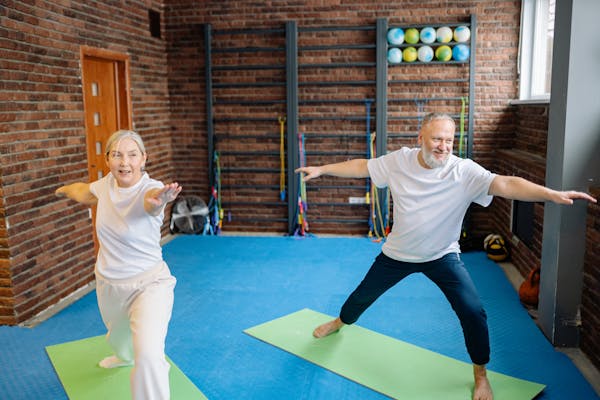
Safety First
This workout doesn’t ask seniors to transition from standing to the ground multiple times because many seniors experience dizziness or lightheadedness in this type of transition. Still, seniors should take care when transitioning from one position to another. If any dizziness or lightheadedness occurs at any time, stop exercising and take some time to recover with some deep breaths.
Warm-up
Spend about five minutes in an easy warm-up. Something like a walk on a treadmill or a ride on a stationary bike will help prepare your body for the workout and avoid injuries.
Cool Down and Stretch
Cooling down and stretching helps prevent injury and brings the heart rate back down after the workout. It’s also a good time to reflect on the workout and decide if heavier weight can be used next time; increase weights as your body becomes accustomed to the workout to build more muscle.
Exercise Options
When you age, your muscle mass begins to decrease at a rate that may surprise you. This doesn’t mean that you lose muscle mass and can never get it back. It just means that you need to approach your muscle-building exercises differently than younger people do.
Cardio as a Complement
While cardio is not designed for building muscle mass, any comprehensive workout routine for seniors should include some cardio for cardiovascular health. As such, the following customized workout routine should be complemented by some cardio – ideally, do this strength routine twice a week in addition to your cardio workouts of at least three times a week. Cardio doesn’t have to be vigorous, especially for seniors. Instead, stick to low-impact cardio such as swimming, riding a stationary bike, or walking as tolerated.
Slow Movements
It is important to note that the moves listed within this workout are designed to be done slowly – so slowly, in fact, that it feels like slow motion. Studies have found that building muscle mass in seniors who cannot lift heavy weights is best accomplished by lifting lighter weights, but very slowly. This slow pace compels the muscles to work harder, similarly to if they were lifting heavier.
Head-to-Toe Strength Workout for Seniors:
Each strength move within this workout should be done with three sets of six reps, with a brief rest of around one minute between sets. This is merely a starting suggestion, as some seniors may have to start out with one set of six reps and already feel exhausted while others can exceed the three sets and still feel like they’re ready for more.
All strength moves within this workout should be done at a 10/10 cadence (10 seconds flexion followed by 10 seconds extension) and the weight should be light. If using hand weights, 3 or 4 lbs. is a good starting point, but smaller works too if necessary. Seniors already accustomed to weight training may find that the slower cadence compels them to use a lighter weight than usual.
Wall Push-Ups
Seniors who have no problem going to the ground for exercising can do traditional push-ups here in the 10-10 cadence. Those who prefer to stay standing can put hands out wide against a wall and, keeping their body straight, bend the elbows to bring their chest closer to the wall slowly, squeezing their muscles for the ten seconds. Push away from the wall, keeping the body straight, for ten seconds. To make it more difficult, lift one leg behind the body for the entirety of the movements.
Weight Squeeze
This can be done sitting or standing. Squeeze a weight (ideally a weighted plate), in between the palms of your hands with your elbows up and out. It should look as if you are trying to crush the weight in between your two hands – or praying really intensely. Squeeze for the 10-second duration, paying close attention to not dropping the weight on your toes if you are standing.
Side Bends
This exercise targets the abdominals without forcing the exerciser down to the ground. Hold a weight in one hand with the arm dropped to your side. Lean (don’t bend) to that side, squeezing your core muscles for the 10-second flexion and 10-second extension back to upright. Repeat on that side for the six reps total before moving to the other side.
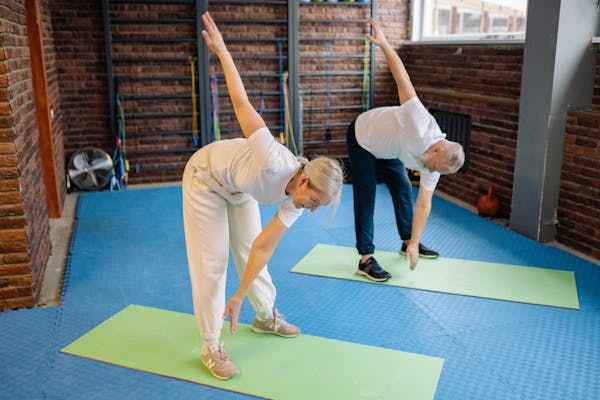
Zottman Curls
These arm exercises strengthen both the biceps and the forearms. Start the exercise just like a traditional bicep curl on the 10-second flexion, but on the extension, turn the palms down until you reach the bottom of the exercise.
Squats
Some seniors have a difficult time tolerating lunges because of the pressure on the knees, so squats are frequently used as a good alternative. Some important aspects of performing squats for seniors include:
- Do them weighted or without weights. Body weight is sufficient to build strength and muscle mass, particularly when done at the 10/10 cadence.
- Focus the weight of the body into the heels as this will protect the knees.
- If balance issues exist, hold onto a wall or chair while performing the squats.
Calf Raises
Like squats, calf raises can be done with weights in hand or simply use body weight. Also similarly to squats, seniors will balance issues can hold onto a wall or chair as they do this exercise.
- Stand tall – if using weights, those are in your hands and down to your sides.
- Without tensing your shoulders or neck, lift your feet into “tippy toes.” Remember the slow cadence: 10 seconds up and then 10 seconds back down.
Conclusion:
It’s Never Too Late! Whether your muscle-building routine involves strength training or relies more on resistance training, the fact is, it’s definitely possible for seniors to build muscle mass when they take their nutrition and exercise seriously. The important thing to remember is that any new exercise regimen should be eased into. Also, you should always consult a doctor before starting a new exercise regimen. After all, you can’t build muscle if you’re recovering from an injury. Taking the time to do things realistically and safely is the best way to improve your health and avoid injury.
